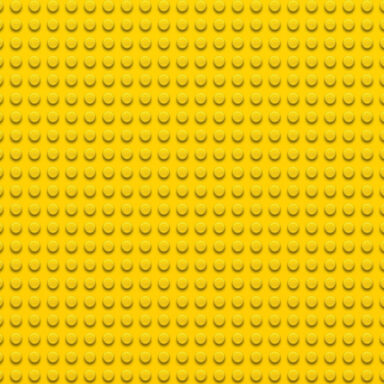What creative designers can learn from video games
I know you probably don’t care what I do in my spare time.
But I’m going to share anyway: I like exploring exotic locations, meeting new friends, and then blowing one or both up.
Fortunately for the world at large, the video gaming industry has given me a socially acceptable outlet for this. Everyone’s a winner.
Digital designers can be winners too (not just in the sense of beating a game). There’s a lot to learn from the gaming industry, which has for years pioneered stunning designs, graphical techniques and applications, and UX interfaces that are so smooth you barely notice that you’re using them.
It’s also brought us games which were buried because of how bad they were. I mean that very literally.
But never dismiss the video games industry as juvenile or puerile. There’s a lot it can teach even the best creative designers about great (and terrible) ideas and practices.
Would you like to see the menu?
We’re all familiar with the hamburgers and drop-downs at this point. We use them too, it’s nothing to be ashamed of. After all, if you deliver the expected and the familiar, people know what’s happening.
But if you deliver the unexpected, the shocking, and the usable, people get excited, and remember you. Our creative designers have toyed with wheel menus (in game development terms, radial context maps) and other alternatives in the past to create some very different digital approaches.
And video games have a lot more to offer, from imaginative intro levels which double-up as main menus, as well as incredibly detailed user interfaces which are somehow still really easy to use (with a bit of practice).
Some games, eschewing menu systems pretty much altogether, allow players to manage pretty much all the bits and pieces (bar meta-controls like audio and video settings) without ducking into a menu at all. Instead, heads-up-displays (HUDs) give the player all they need to know in one place, without interrupting the flow of the narrative or gameplay. The integrated experience is effortless for players, allowing for total immersion.
Another interesting approach is to have a hub area which effectively acts as a menu, letting players think about where to go next without resorting to a dull list to select levels from. You’ll find this in loads of games across an incredible tonal range, from Nintendo’s Super Mario titles to From Software’s dark fantasy Souls series, and as many as you can think of in between.
Think for a moment about your homepage as a ‘hub’ in this sense. It might give you a different view on what its purpose is.
Test until you’re sick of seeing your project
There’s a growing trend of gaming studios pushing things live to meet launch dates, knowing that thanks to high-speed connections, they can follow-up with horrendously huge updates to fix all the bugs they initially let loose.
This is known as the ‘Day 1 patching’.
Let it be a terrible warning.
Bug- and stress-testing probably isn’t the most exciting part of the job, but it’s absolutely essential. There’s growing frustration amongst gamers that they’re shelling out for games which may very well be broken on release, and they’ll then have to wait while a 50GB download fumbles its way through. And the developers know exactly what’s going on.
Your customers probably won’t have anywhere near the same level of commitment to your brand as a die-hard gamer, and might not have even spent a penny on your services (yet).
Don’t lose their trust by releasing semi-produced experiences, thinking ‘I’ll fix that bit later’. They won’t be in a rush to come back. Likewise, creative designers need to spend enough time stress-testing other complex digital experiences, to avoid bumps later down the line.
Creative designers: Masters of the walkthrough
‘Training missions’ are a common convention in video games. Even multiplayer-only games like 2014 smash ‘em up Titanfall have single-player tutorials to ease people in.
Likewise, you need to make people feel at home when you’re designing complex digital experiences. That means building tutorials that make people think “That’s cool,” instead of “That’s obvious.”
One of the best strategies for this, rather than trying to walk them through everything at once, is to slowly drip-feed them what they need to know, when they need to know it.
And always give them the chance to opt out of receiving hints and tips. As any gamer will tell you, there’s nothing more frustrating than mashing every button in sight, trying to bring a tedious introduction to an end.
Let your users go if they want to leave, but give them the option to come back to find out more later on.

It’s all a game
People like to succeed.
Give them what they want. Their brains love it.
Take a look at the mobile gaming industry. King’s Candy Crush has racked up over 1.1 trillion rounds of play. That’s thanks to an intricate system of level-ups, power-ups, and little bursts of serotonin.
It might sound like a million miles away from what creative designers do, but it’s not. Here’s a fairly boring example to put against that, to show the power of strategic gamification.
Think about LinkedIn. As you fill in your details, it ranks you on how complete your profile is. Over time, it nudges you to add a little extra, and comes complete with a color-based ‘level-up’ system.
I think the names for each level are quite clever too. For example, my profile is ‘intermediate’. That doesn’t insult me, but it makes me stop and think. Does my profile not look professional enough? Will people take an ‘intermediate’ profile seriously? The doubt, for many people, will be enough to push them into giving at least a few more details.
In this way, it coaxes more information out of me for its core audience of recruitment consultants. Then rewards me with the same little serotonin boost for getting my profile to the next level. It’s essentially the same system as Candy Crush. But wearing a very different outfit.
Teaching creative designers new tricks
There are a lot of people hesitant to say it out loud — but a good video game is a work of art. It’s all about building a believable world, and the results these days can be as impressive as any blockbuster movie.
So if you take nothing else away, hopefully you’ve clicked on a few of the links I’ve scattered around in here, and started to do a little of your own research on the creativity abundant in the video games industry, that might just inspire a new visual direction for your own work.
And if you’ve got a new project that you’d like our creative designers to give you a hand with, just give us a call.










